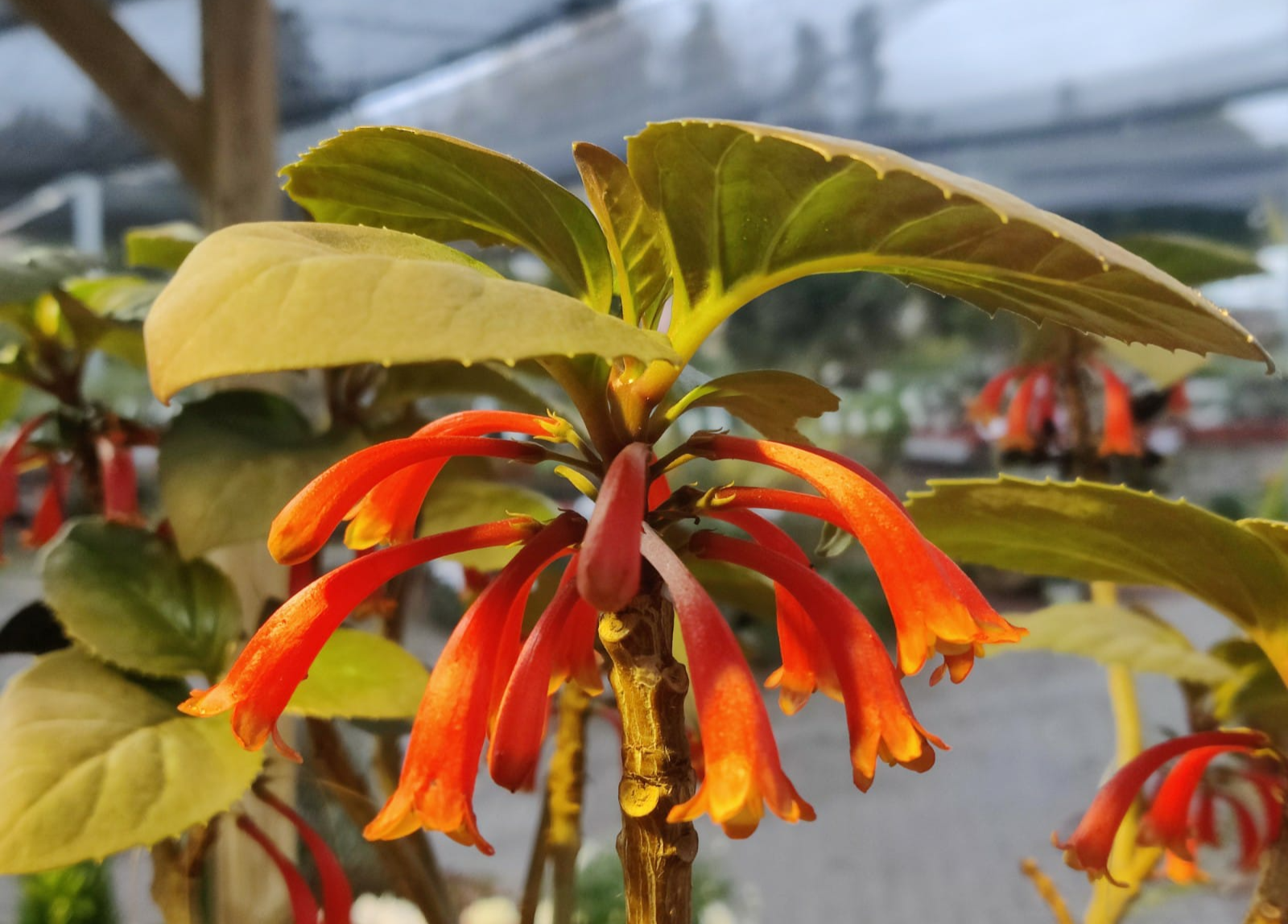
Dermatobotrys saundersii
Family: Scrophulariaceae | Origin: South Africa
The common reaction to seeing Dermatobotrys blooming is: What is this strange plant?! Indeed, it does not resemble any other plant in its appearance or name and is also the only plant in its botanical genus.
Dermatobotrys Saundersii is a small shrublet that grows wild in the coastal forests of eastern South Africa and Madagascar. It frequently grows as an epiphyte on tree branches in those areas where the summer is rainy and the winter is dry.
The plant develops a sort of thickened stem base (Caudex) at the bottom from which rise branches 80-100 cm long.
The leaves, dark green, large and beautiful feel and look a lot like skin (Derma = skin in Greek) and emit a pleasant/unpleasant pungent smell.
By early winter the leaves sometimes fall and at the same time new red leaves emerge at the ends of the branches. A short while later, red tubular flowers appear under the leaves arranged in a circle around the branch and bloom for several months.
In the spring, the flowers bear small fruits that turn brown when ripe and (with a healthy imagination) are reminiscent of a bunch of grapes (Botrys = bunch of grapes in Greek).

Dermatobotrys Saundersii prefers to grow under partial or full shade in a hanging basket or pot in a light, well-drained soil. It likes regular watering in the summer but is relatively resistant to drought and tolerates rain in the winter.
One such plant survived last year’s many frosty nights in a relatively protected corner of a Jerusalem garden. It can also be grown indoors in a well-lit corner.

